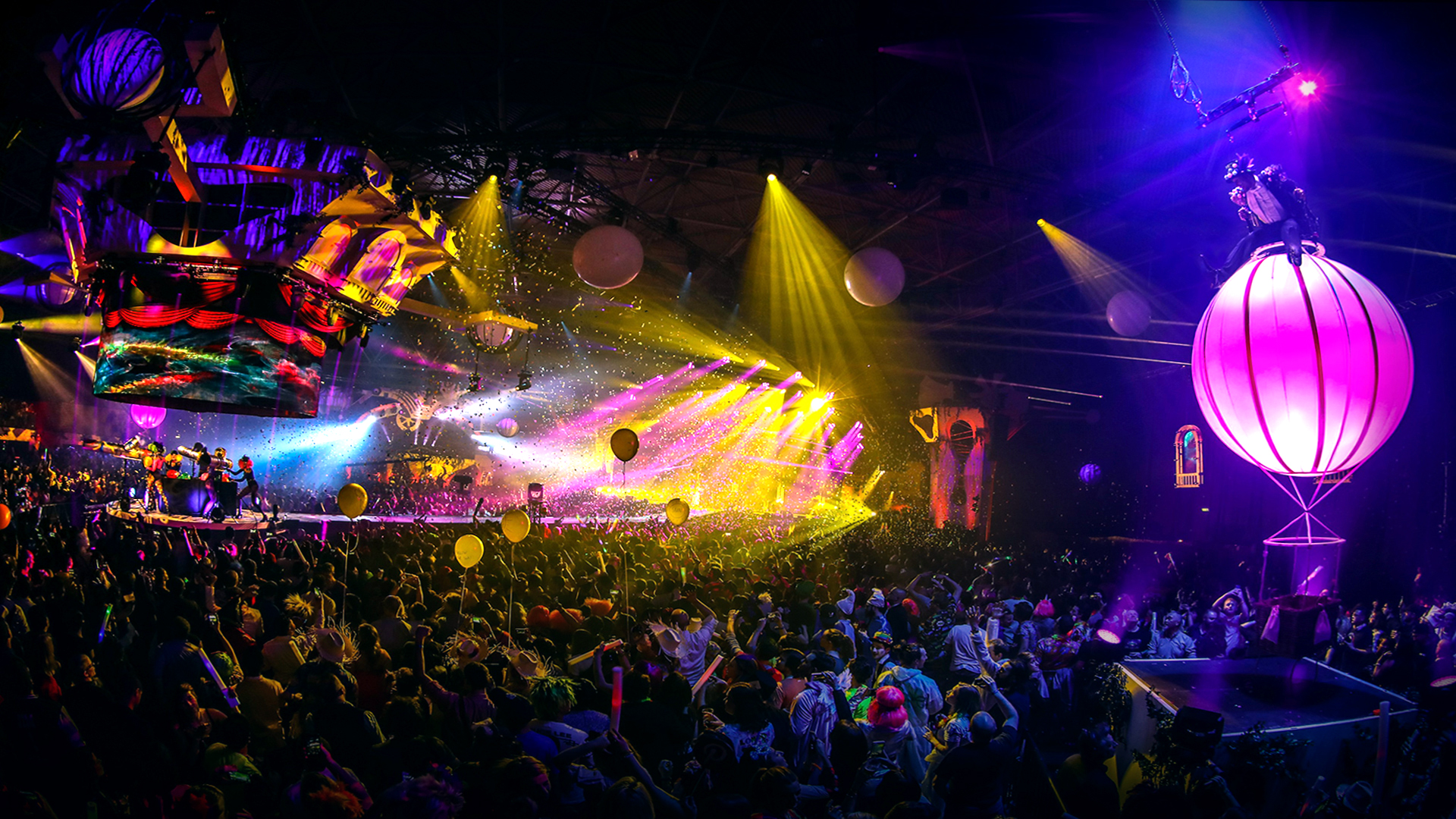
“The effect you have on others is the most valuable currency there is”. This quote by Jim Carrey is something that I have always taken to heart. And I am convinced that most other (live) entertainment entrepreneurs feel the same way. We all know the success of the memorable experience you create is no longer measured in money, attendance or the amount of fireworks you blast into the night sky. It is all about the impact you make, the impression you leave behind and the change you bring about. Evidently, this is not as simple as it sounds. And although I am certain that many of you have your own methods on maximizing the effect on your audience, I would still be happy to share my own views on the matter.
Plugged live shows is a live show company first and foremost but, as explained below, this does not mean we are not involved in other aspects of an event. During the last years we have conducted a lot of research on how to increase the effect we have on others. We found that, for us, the best way to enhance an experience is to ensure that every layer of the actual event is well executed. To guide our creative process concerning these layers we created a model; ‘Our event approach’ (as shown above).
Creation needs a solid foundation. A cold fact. For us, this is the rationale. In Latin, rationale can be translated to rationally, possessing reason or that which has a ratio. The rationale is the very essence of the project, the reason why the experience is created or the message that you want to get across to the audience. In our opinion this is the most important part of the creation process. Once you have the perfect rationale, every other detail seems to come naturally.
Furthermore, I would like to stress the fact that a rationale for a project is not something that you can come up with, the rationale can never be conceived… it can only be discovered.
To find the rationale you need to enter an open dialogue with your client and do the necessary research.
Keep on digging to the very core of the subject at hand and only stop when you find a rationale so extremely logical and suitable that you start to wonder why you did not find it earlier. Keep in mind, the rationale is the message that carries the experience and is not to be confused with the effect you want to have on your audience.
Once you have the rationale it is time to create the actual experience. Basically, this is the way in which you get ‘the message’ across to your audience or the translation of your rationale into something tangible. As I said before, it is of vital importance that every detail of your experience is a way in which the rationale is communicated towards your receivers. Having a dramaturge during the process can help a lot, this is something that they have been doing for ages in theatre productions. It is the first spectator, someone who is not participating in the actual creation but sees the experience through the eyes of the audience. The most valuable advisor you can have, the guardian of the ‘wow’.
To explain the importance of a well balanced live show, as well as that of a perfect build up, I always like to refer to Beethoven’s 7th symphony, widely recognised as one of his best. At the start of this musical piece there is so little to hear that you might wonder if you even pressed play at all. Slowly but surely you will hear more and more instruments adding to the overall sound of the piece until the inevitable climax that we all know is about to come. Your experience should be like that… a build up of suspense in which every part seamlessly works together, enhances each other and results in a breathtaking climax.
Creating a perfect live experience is like that, it is about finding the equilibrium… as with most things in life it is easy to aim for the extremes, but the trick is to strive for balance.
Not unlike films, music or any other form of entertainment, an experience needs harmony. Every single aspect must be in proportion.
The event environment is all about the customer journey to and from the experience within the given location where the actual experience takes place. There are obvious factors that need to be addressed, for instance, your guests can’t be hungry or thirsty, need some time to acclimatize to the environment and must be comfortable enough to enter your experience.
The trick, however, is not found in these basic aspects… it is all in the details.
Make sure that every single detail from as soon as they enter the location is a direct derivative of the rationale.
This way you can make sure they not only adjust to the location, but also to the message you’re about to get across. Keep in mind that it is all still part of the experience and your receiver’s supply of hormones is not endless… avoid big bombastic or incredible breathtaking moments that could either compromise or outshine the climax of the actual experience.
Getting the event environment just right might prove to be difficult. The best way to achieve this is co-creation. Since there are probably a fair number of different organisations that contribute to your experience it is advisable to get together with them early on in the creation process to make sure they understand and develop a feeling for the rationale.
As the name implies, this is the part of the experience that takes place outside of the given location. It starts at the very beginning of the customer journey which could be months in advance and ends long after. By now, I feel like it is redundant to stress that, again, every detail must fit the rationale. These early moments in the customer journey provide some excellent opportunities to enhance the effect on your audience. Because this could be months before or after the actual experience you possess an incredible advantage.
You can create suspension for what is to come, already creating some excitement and create an urge for them to experience the actual live show. At this point you are already inducing hormones within them that will be replenished in the given time period. Additionally, using details that were a part of your experience afterwards, like using the main theme in the after movie, will blast your audience straight back to the feeling they had when they were living the experience.
If you want to achieve all of this there is one thing you must understand the basics of:
Neuro-endocrinology.
This is where creativity meets science, or biology, if you will. It is the study of the interaction between the nervous system and the endocrine system. When it comes to live experiences, neuro-endocrinology involves the activating of different hormones. Humans have a finite (but refillable) supply of hormones. These can be induced by sudden special effects, storytelling, music, etc. To create a lasting experience or to bring about change in the minds of your receivers you must induce the right hormones on the perfect moment. It is comparable to making a cocktail of which the ingredients are (amongst others) oxytocin, serotonin, dopamine or endorphins. Essentially, there is a hormone for every feeling that you want to induce. Knowing these hormones, how to induce them and more importantly when to induce them is what can set your event or campaign apart from the rest.
Currently we are conducting research on this extremely captivating field of expertise together with some great scientific minds. We hope to find ways to maximize the effect we have on others even more. Since we are still researching the subject of neuro-endocrinology and the fact that it is such a complicated yet interesting subject I decided to leave that for another article.
NOTE TO READER
I sincerely hope that you find this article useful and that it might add something to your own method of maximizing the effect on your audience. Likewise, I am interested in your views on the matter as well, so feel free to contact me.
How To Make Your Creative Team Thrive
How To Use Music To Emotionally Move An Audience


Koen Colmbijn is a Dutch live-entertainment Director. He is a visionary emotion expert. A storyteller with a knack for (corporate) strategy. His passion is to touch people’s souls via theatrical concepts. During his 10 years of experience in the live entertainment industry he collaborated with industry leaders within different cultures such as Heineken, Board of Saudi Aramco, Booking.com, Volvo Ocean Race, ExxonMobil and The Walt Disney Company. Furthermore, he has produced inventive live shows for large corporate festivals, stadium shows, dinner experiences, ceremonies and well-known music festivals in Beijing, Shanghai, Tokyo, Seoul, Vancouver, Sochi, Cape Town, London, Berlin, and Amsterdam. He has worked with world renowned artists, from Yo-Yo Ma. Janine Jansen, National Ballet of the Netherlands & Michaela DePrince to Tiësto, Hardwell, Armin van Buuren and many more. Koen challenges himself and his dedicated team on a daily basis to beat the status quo in the international world of Live Entertainment.
Read Full Profile© 2021 TheatreArtLife. All rights reserved.

Thank you so much for reading, but you have now reached your free article limit for this month.
Our contributors are currently writing more articles for you to enjoy.
To keep reading, all you have to do is become a subscriber and then you can read unlimited articles anytime.
Your investment will help us continue to ignite connections across the globe in live entertainment and build this community for industry professionals.